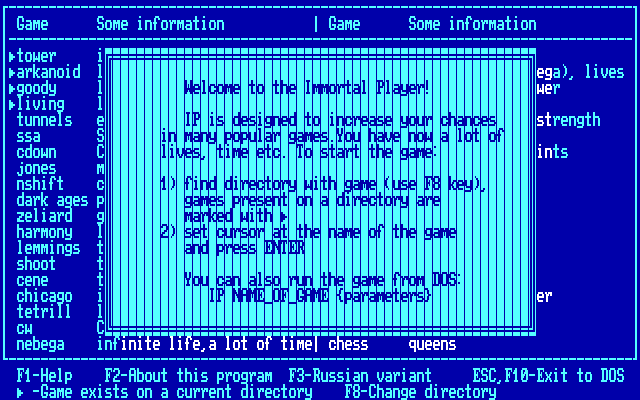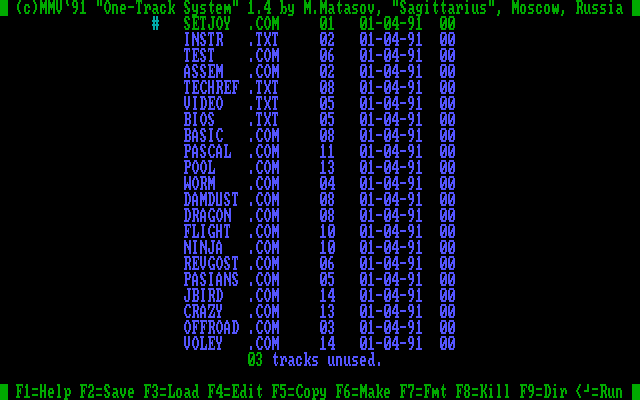Driver:Soviet PCs
Soviet PC clones
ES 1840 and ES 1841
These were intended for professional users -- monitor, printer, hard disk drive (in model 1841), development kit and productivity software were included.
Models 1840 and 1841 mimic IBM PC 5150 and IBM PC XT 5160, but are not 100% compatible -- some features are missing (no support for 8087 math co-processor in the 1840), some hardware is completely (serial port) or partially (keyboard scan codes) incompatible. The bus is ISA, cards use a different form factor (20x24 cm with a single 135-pin connector). Video adapters are extended versions of MDA and CGA (both support downloadable text-mode fonts). Model 1841 could route sound from optional speech synthesis board to internal speaker and supported a bus mouse.
1840 and 1841 shipped with customized versions (likely not authorized by original developers) of operating systems and application software -- CP/M-86, MS-DOS 3, SuperCalc, WordStar etc. CP/M and DOS were fully translated to Russian, down to command names. The hardware and BIOS is compatible enough that unmodified software will also run.
MAME emulates all standard hardware in both models, except serial ports. Driver names are ec1840 and ec1841. Some of the software is in the softlist.
On startup, keyboard input is in Cyrillic mode; F11 switches to Latin, F12 -- back to Cyrillic. Help key (used by CP/M) is mapped to Pause/Break.
Model 1841 includes a demo disk ('demo' in the softlist), probably intended for use on trade shows. A full recording is on YouTube -- https://www.youtube.com/watch?v=1pj-CVIMgn4
ES 1842
A clone of IBM PC AT 5170. Has used a modified copy of Intel 8086 CPU (adds PUSHA instruction and invalid opcode interrupt) and additional hardware to support emulation of Intel 80286 features.
MAME driver name is ec1842 (NOT_WORKING).
Poisk-1
A cheap MS-DOS compatible clone with built-in keyboard and four expansion slots. Designed in 1988, revised in 1989 and 1991. Was rather popular, judging by the range of available expansion cards (first- and third-party). CPU is 8088 clone clocked at 5 MHz.
Since the hardware is so different from the original PC (DMA controller is missing, video hardware is somewhat CGA-compatible but has no mc6845 or native text mode, and so on), some software (mostly games) was patched to run on the Poisk.
MS-DOS will run on the machine (unmodified or one of its many clones, including "MDOS Poisk"); and there's an unique "One-Track System" (available in the softlist). Floppy BIOS assumes a 80-track (720KB) drive is connected; 360KB floppies must have media descriptor byte 0xFC or higher.
MAME emulates revision 1991 of this machine, with three add-on cards (ROM cartridge, floppy interface, and sound card). Driver name is poisk1. Keyboard layout toggle is mapped to Right Control key.
Sound card supports digitized sound I/O at 10 kHz sampling rate, MIDI in/out, and 6 channels of square wave output (driven by two 8253 timers); only DAC is currently supported by MAME. A recording of speech synthesis demo supplied with the card is on YouTube -- https://www.youtube.com/watch?v=y4OGNWjyqbI
Screenshots
The Immortal Player - trainer for '80s PC games.
Elektronika MS 1502
Another MS-DOS compatible clone with built-in keyboard. Two expansion slots. A bit more compatible and faster than Poisk-1 (CGA is fully implemented in an ASIC; CPU clock is 5.33 MHz) and has more onboard hardware (serial and parallel ports), but still no DMA or Intel floppy chip.
Like Poisk-1, will run original MS-DOS, and has its own unique MS-DOS clone (Sigma Four DOS). Will also run One-Track System; both are in softlist.
MAME emulates all standard hardware of MS 1502, plus two add-on cards (ROM cartridge with BASIC, and floppy interface). Driver name is mc1502. Keyboard layout toggle is mapped to Right Alt key. To enter BIOS monior, press Enter twice after memory test completes. To boot from first floppy, enter '@'.
Screenshots
One-Track System - file listing

